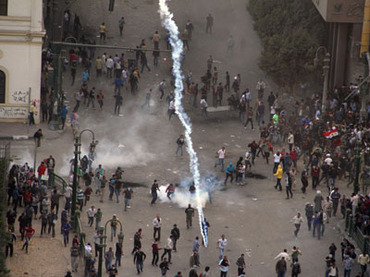Filmmaker documents last year’s Sudanese refugee protest
CAIRO: When filmmaker Ahmed El Kady arrived in Cairo in October 2005, after working on a film in Berlin, he was astonished and intrigued about what he found in the center of Cairo. Amid the busy, lively streets of Mohandiseen, Sudanese refugees were camped out in a square in front of Moustafa Mahmoud Mosque.
Last September, a small group of around 20 Sudanese refugees, asylum seekers and failed asylum seekers began a peaceful sit-in protest close to the office of the UN refugee Agency, UNHCR.
El Kady’s interest was immediately captured, and he started to research the topic. “I always knew there was trouble in Darfur, but I didn’t know the story, he explains.
The majority of El Kady’s experience was acquired working on television commercials and music video clips. “I’ve done so many things in media that pay well but have no message, so I was in the mood to make a film with meaning, explains El Kady.
The first step was acquiring the go-ahead. “I wanted to get permission from the refugees, although I didn’t have to, but I wanted to because they were very against the media as they felt they were being perceived wrongly, says El Kady.
He spoke to one of the refugees’ leaders who agreed to let El Kady film as long as he clarified what he was planning to portray. El Kady explained that he wanted to film the reality of the situation, and give them the chance to speak their minds on camera.
He then went to the Ministry of Interior to get a permit to film, and another one from Egyptian Radio and Television Union (ERTU).
The hard part wasn’t over yet; El Kady constantly faced obstacles. “Sometimes I had to wait eight or nine hours with my camera outside their camp because they wouldn’t let me in . And even when he did get in there was always the danger of being assaulted by the refugees, as many cameramen were. Luckily, he was diplomatic enough never to get hit.
For two and a half months El Kady was a frequent visitor at the camp, filming and interviewing the refugees. He feels that most of them, with the exception of the few leaders who were dealing the UNHCR, were very innocent.
Entitled “Shadows in the Dark, the majority of the film’s 26 minutes takes place within the camp and focuses on the refugees, but the documentary also includes some significant interviews with an NGO manager directly involved with the situation. Skillfully edited, as the manager provides a background of events and an explanation, footage of his testimony is interspersed with images from the camp. Another interview that grabs the viewer’s attention is of an average citizen, who is employed at the Ministerial Cabinet, making negative comments on how the refugees annoy him.
Though the refugee camp, and ultimately its violent evacuation, was regularly featured in the local media, the documentary’s footage from inside the camp, as well as the testimonies from the refugees offers rare and poignant insight. Viewers were able to empathize on an individual level and gain a deeper understanding of their plight.
Upon completing his documentary, El Kady received a lot of attention. Among those who noticed it was Barbara Harrell-Bond, founding director of the Refugee Studies Center at the University of Oxford and founder of a legal assistance program in Cairo, now known as AMERA (Africa and Middle East Refugee Assistance). She was instrumental in presenting the film at the British Embassy in Cairo.
El Kady also received many offers from news channels like BBC and Al-Jazeera, but didn’t want to sell it to them. “I did this film on my own budget with minimum resources, a microphone and a camera. I am not happy with the techniques, says El Kady. But he is willing to fix it up with a bigger budget on bigger scale if he gets an offer he likes.
El Kady feels that his film, if aired abroad rather than just Egypt, could aid in raising awareness for Sudanese refugees on an international level. He is planning to show the film in Europe later this year.

